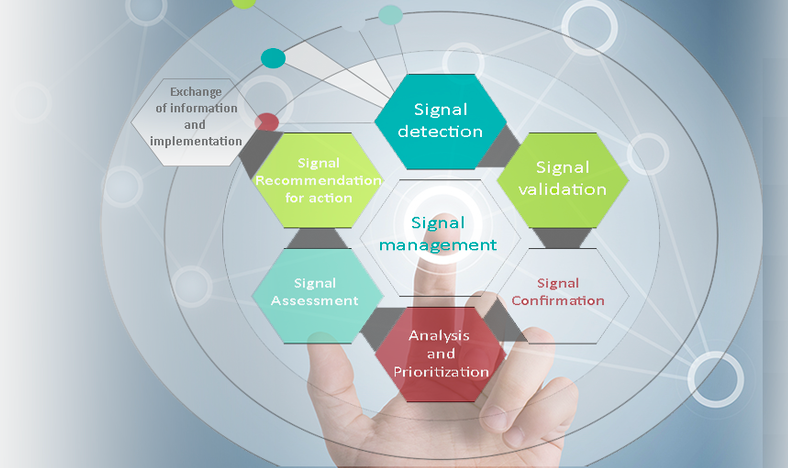Signal validation is the process of evaluating the data supporting the detected signal in order to verify that the available documentation contains sufficient evidence demonstrating the existence of a new potentially causal association, or a new aspect of a known association, and therefore justifies further analysis of the signal.
This evaluation should take into account the strength of the evidence, the clinical relevance and the previous awareness of the association
The following elements should be considered when performing signal validation.
On clinical relevance:
- Seriousness and severity of the reaction
- Outcome and reversibility of the reaction
- Additional insight on a known adverse reaction, e.g. in terms of its severity, duration, outcome, incidence or management
- Reactions occurring in the context of drug-drug interactions
- Reactions occurring in vulnerable populations (e.g. pregnant women, children or the older population) or in patients with pre-existing risk factors
- Reactions occurring in different patterns of use (e.g. overdose, abuse, misuse, off-label use, medication errors, falsified products)
On previous awareness:
- Biological plausibility of the event in light of the known or assumed pharmacological properties of the suspect drug or the drug class.
- Extent to which information is already included in the RSI or package insert.
- Association has already been addressed in an aggregate report, or has been subject to a regulatory procedure.
On Strength of the evidence:
- Strength of the association with the product
- The total number of cases (after exclusion of duplicates), and amongst those, the number of supportive cases.
- Number of cases in the context of patient exposure
- Additional cases reported with related terms (e.g. other MedDRA terms indicating clinical complications or different stages of the same reaction)
- Evidence of dose-response effect
- Frequency, that is, for example the number of spontaneous reports in comparison to earlier periods and/or in relation to estimated patient exposure; same type of information in the context of clinical trial data.
- Quality of the reports: Completeness of data, plausibility of the information, availability of data to substantiate reported diagnosis.
- Reporter and company causality assessment of individual cases.
- Temporal relationship of the product use and event, including information on de-challenge and re-challenge.
- Consistency of data patterns indicating potential risk groups.
- Consistency of findings across available data sources.
- Specificity of a case series (for example, same histopathology or subtype of a disorder is reported in all cases of a series of reports.
- Alternative medical or technical explanations.
In principle, only new signals for which there is no previous awareness should be validated. However, an already known association may give rise to a new signal if its apparent frequency of reporting, duration, severity or a change in the previously reported outcome (e.g. deaths) suggests new information on the already known association.
Additional sources of information may provide further evidence for or against a causal association, or a new aspect of a known association, and may be considered during further assessment of the signal, depending on their relevance for the signal and availability to each organisation. These may include:
- Clinical trial data
- Findings regarding similar cases in the scientific literature, including information on substances of the same class of medicinal products
- Information on the epidemiology of the adverse reaction or the underlying disease
- Experimental and/or non-clinical findings
- Information from other regulatory authorities worldwide.
Possible decisions during the signal evaluation process

Validated signal: A which contains sufficient evidence demonstrating the existence of a new potentially causal association, or a new aspect of a known association, and therefore justifies further analysis of the signal.
Non-validated signal: A signal for which the signal validation process has led to the conclusion that the available documentation at that point in time does not contain sufficient evidence demonstrating the existence of a new potentially causal association, or a new aspect of a known association, and that therefore further analysis of the signal is not warranted.
Refuted signal: A validated signal which, following further assessment has been determined to be “false” i.e. a causal association cannot be established at that point in time
The validated signals with important public health impact or that may significantly affect the benefit-risk profile of the medicinal product in treated patients require urgent attention and need to be prioritized without delay.

